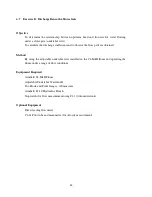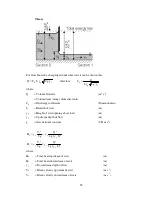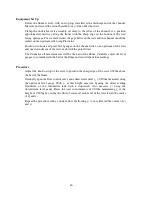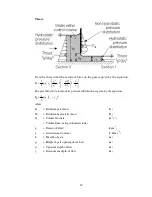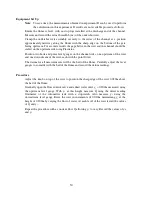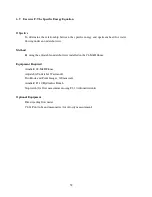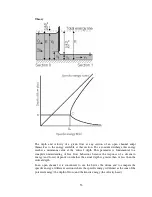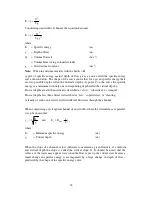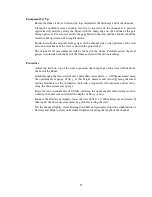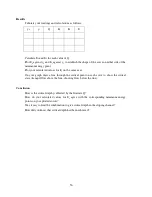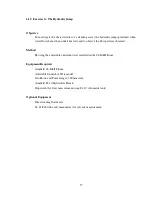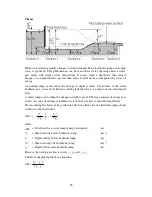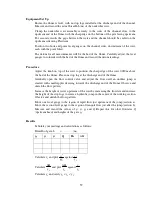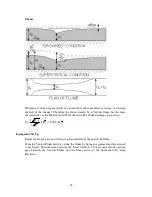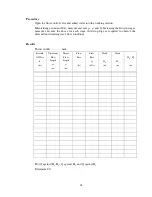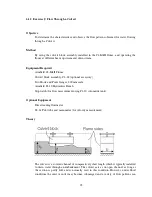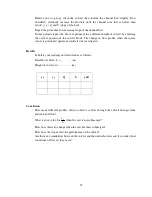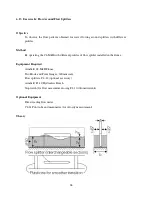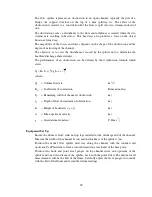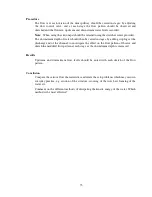
58
Theory
When water flowing rapidly changes to slower tranquil flow a hydraulic jump or standing
wave is produced. This phenomenon can be seen where water shooting under a sluice
gate mixes with deeper water downstream. It occurs when a depth less than critical
changes to a depth which is greater than critical and must be accompanied by a loss of
energy.
An undular jump occurs when the change in depth is small. The surface of the water
undulates in a series of oscillations which gradually decay to a region of smooth tranquil
flow
A direct jump occurs when the change in depth is great. The large amount of energy loss
results in a zone of extremely turbulent water before it settles to smooth tranquil flow.
By considering the forces acting within the fluid on either side of a hydraulic jump of unit
width it can be shown that:
+
−
+
=
∆
g
2
V
y
g
2
V
y
H
2
b
b
2
a
a
where:
∆
H
= Total head loss across jump (energy dissipated)
(m)
V
a
= Mean velocity before hydraulic jump
(m s
-1
)
y
a
= Depth of flow before hydraulic jump
(m)
V
b
= Mean velocity after hydraulic jump
(m s
-1
)
y
b
= Depth of flow after hydraulic jump
(m)
Because the working section is short y
a
≈
y
1
and y
b
≈
y
3
Therefore simplifying the above equation:
(
)
3
1
3
1
3
y
y
4
y
y
∆
H
−
=

